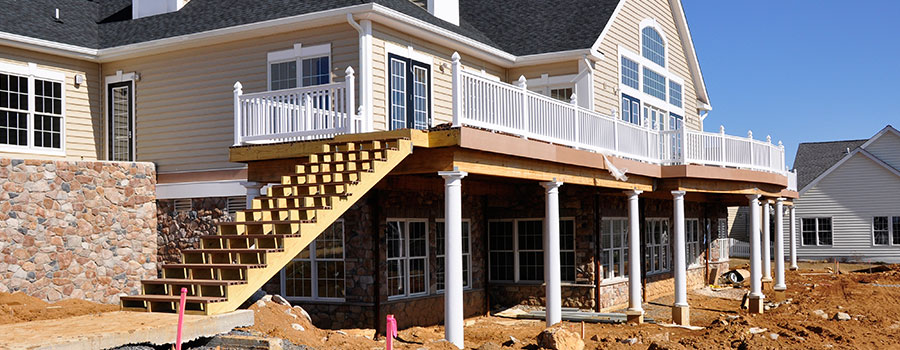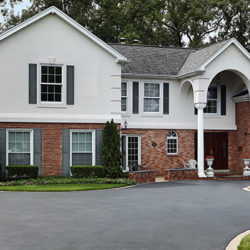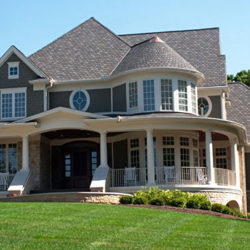Many people are hesitant to add space and value to their homes because of the delicate balancing act that must be performed between the cost of the project and functionality.
Fortunately, the solution to designing a cost-effective addition begins with a straightforward step: identifying cost variables. When contemplating a home addition, one of the things that should be at the top of your mind is the cost – and what factors can influence it.
To help you out, here are these factors as given by home addition companies:
Size of the addition
Most people believe that the size of an addition is one of the most essential elements to consider when determining the cost of the project. This is why the most frequently asked question when planning an addition is, “How much does an addition cost per square foot?”
Unfortunately, this is frequently a tricky question to answer. Each expansion has a unique set of requirements, challenges, and specs. These variances between projects make it practically difficult to estimate a blanket cost per square foot.
As a general rule of thumb, you can expect two things to be true about the cost per square foot of an addition:
The larger the addition, the greater the overall expense. More square footage leads to a higher bill because materials and labor are charged per square foot.
The cost per square foot decreases as the size of the addition increases. While it may seem paradoxical, there are always some fixed expenses when performing an addition.
Whether you have 100 or 1,000 square feet, you will almost certainly have to pay design fees, permitting fees, and labor charges that cannot be avoided. As a result, the larger your addition’s square footage, the more evenly distributed those fixed expenditures are.
Structure of the addition
When examining the cost of an addition’s structure, two significant aspects can influence your cost: levels and foundation.
An addition might consist of one or more levels. It can be placed on the side, above, or below the home. So, if you’re considering an addition, one of the first decisions you’ll need to make is how many levels you want and where they will be located.
It should come as no surprise that a single-story, ground-level expansion is typically the most affordable alternative. However, a two-story extension is frequently the most economical alternative per square foot.
It’s vital to distinguish between a two-story and a second-story expansion. A two-story addition has two levels, but a second-story addition has only one level. It is erected on top of an existing one. Second-story extensions are generally far more expensive than ground-floor expansions. This is because they frequently necessitate structural strengthening of the existing lower levels.
Basement additions, on the other hand, are the most expensive. When building a basement below an existing house, the house must first be elevated onto jacks.
The foundation must then be removed, the dirt excavated, and a new foundation built. Basement additions are excellent for additional space but cannot expand outwards or upwards.
While this is the case, they are far more expensive due to the extensive planning and construction process required to complete a project like this.
The foundation impacts ground-level extensions most, although it can also affect second-floor and basement expansions.
Traditionally, there are three foundation structures: slab, crawl space, and basement. A slab foundation is essentially a flat slab of concrete on which the structure is erected.
These are frequently the most affordable foundation solutions. While this is the case, slab foundations are more prone to cracking in some areas due to considerable temperature variations throughout the year.
Some homes have a crawl space foundation, which employs concrete walls to lift the entire structure above ground level. Crawl spaces demand more labor and planning, making them more expensive than slab foundations.
Basements are the most expensive foundation choice. Basements, although more than twice the cost of a crawl space, boost the value of your property by adding livable space. So, if you want to sell your house later, a basement might be a great addition.
The design of the addition
If you want to keep the cost of an expansion modest, simplicity will save you money: the more intricate the addition, the more required design effort, labor, and materials. Keeping the addition’s design modest will help you stay within your budget.
Most design experts think that a rectangle is the most cost-effective housing shape. Four straight sides with 90-degree corners are the most straightforward to construct and make the best use of materials. If you want to keep the cost of a house addition low, selecting a rectangular footprint will be highly beneficial.
Inversely, departing from more common shapes will most likely increase costs. 45-degree wall angles, circular rooms, and geometrically complex constructions are all excellent ways to improve the price of an extension. This means you should only choose a complicated design with a large budget.
Another aspect to consider in your design is the home’s architectural style. Homes with a distinct architectural style are sometimes more expensive to expand.
Every architectural style has a unique set of design standards. These guidelines can influence anything from the materials used in construction to the pitch angle of your roof.
To ensure that an addition matches the existing home, designers and builders must strictly adhere to architectural rules. More attention to detail requires more time and experience, which increases the overall cost.
For example, midcentury modern home architecture is characterized by straight, horizontal lines, big windows, and open floor designs. A designer must consider structural, aesthetic, and material constraints to achieve each of these.
Large windows are typically far more expensive than standard-size windows. The beautiful façade of a Victorian house is substantially more costly than a more basic exterior.
You should discuss the addition with your home addition contractors DC and agree on the ideal style for your home. Remember that you should always pay close attention to your budget and do everything possible to keep everything within the budget.



